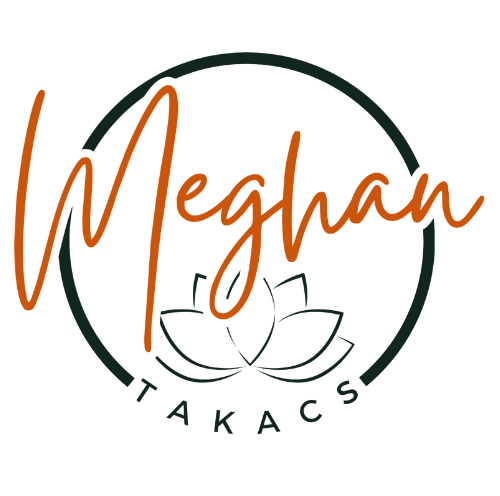Searching for credible knowledge about sports injuries can be a real puzzle. Many websites claim expertise, but only a few stand on solid evidence.
If you’re ever unsure about the credibility of online content, tools like ZeroGPT can help assess whether an article is AI-generated, ensuring that you rely on human-reviewed sources.
In this post, you’ll find a list of outstanding references that provide precise, science-backed information. Let’s get right into it.
1. The American Orthopaedic Society for Sports Medicine (AOSSM)
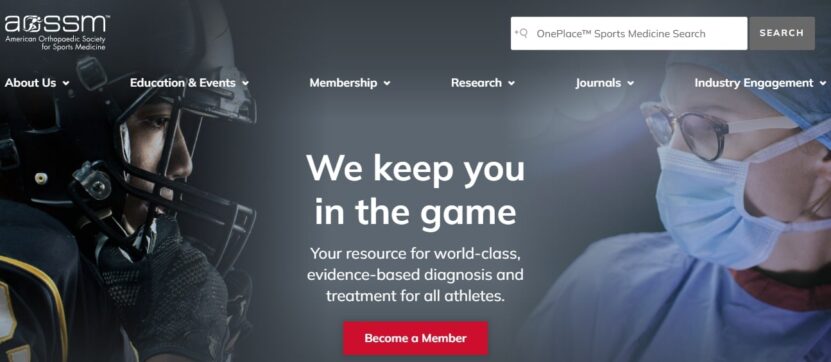
The AOSSM is a leader in advancing sports medicine through education, research, and cutting-edge treatment protocols. It has extensive online content that helps individuals safeguard against injury, especially young athletes.
A highlight is the STOP Sports Injuries program, done in collaboration with the National Council of Youth Sports. That initiative provides tip sheets and video resources explaining modern ways to reduce overuse problems in youth sports.
A specialized directory is available as well, guiding visitors to find certified sports medicine professionals. The website includes interactive surgical animations, which offer a clear viewpoint on standard procedures in sports medicine.
Key Features
- STOP Sports Injuries program with youth-focused prevention guidelines
- Tip sheets addressing overuse issues in young athletes
- Interactive surgical animations for better patient awareness
- Directories for specialized medical professionals
2. British Journal of Sports Medicine (BJSM)
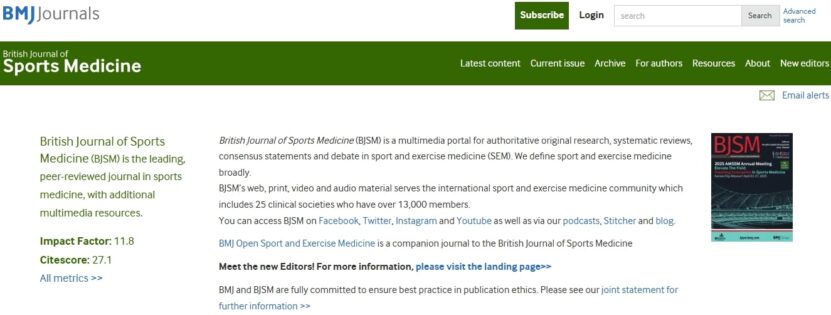
BJSM holds a prominent position among peer-reviewed publications in the field of sports and exercise medicine. It features robust research articles, comprehensive reviews, and consensus statements contributed by international experts.
Professionals and academics often rely on BJSM for credible guidance on everything from rehabilitation strategies to performance optimization. Its platform also includes podcasts, videos, and informative blogs that cater to a broad audience.
Clinicians benefit from leading-edge findings on injury prevention and novel treatment methods, while researchers appreciate the journal’s commitment to advancing evidence-based science.
BJSM covers everything from concussion protocols to chronic overuse concerns, offering a one-stop hub for new discoveries.
Key Features
- Peer-reviewed articles from international experts
- Consensus statements and clinical guidelines
- Multimedia content including podcasts and videos
- Up-to-date discussions on concussion and overuse injuries
3. American Medical Association (AMA) Ed Hub
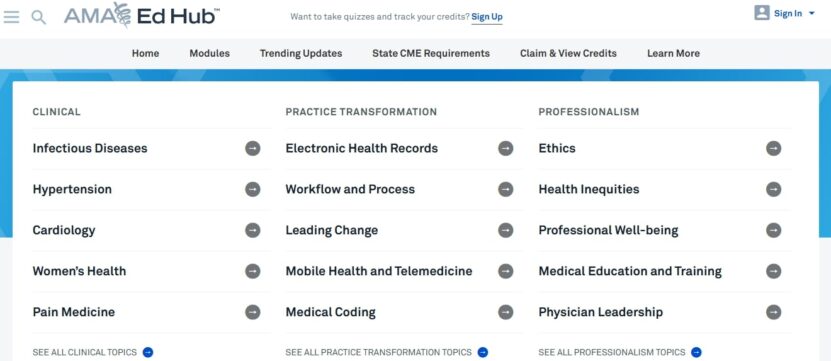
The AMA Ed Hub serves as a centralized platform for continuous medical education, including a special focus on sports medicine.
Physicians, nurses, physiotherapists, and other healthcare providers can earn credits while exploring modules on injury diagnosis, management, and prevention. Topics range from concussion protocols to pre-participation screening guidelines.
The platform also delivers insights on pediatric sports considerations, bridging knowledge gaps for professionals who support young athletes. Every module draws on current best practices, ensuring that users gain accurate, unbiased data.
AMA Ed Hub helps medical specialists remain updated in a rapidly evolving field where research frequently reshapes standard approaches.
Key Features
- Centralized resource for continuing medical education
- Credits available for various professionals
- Focus on best practices for concussion and injury management
- Emphasis on pediatric sports medicine
4. Sports Injury Bulletin
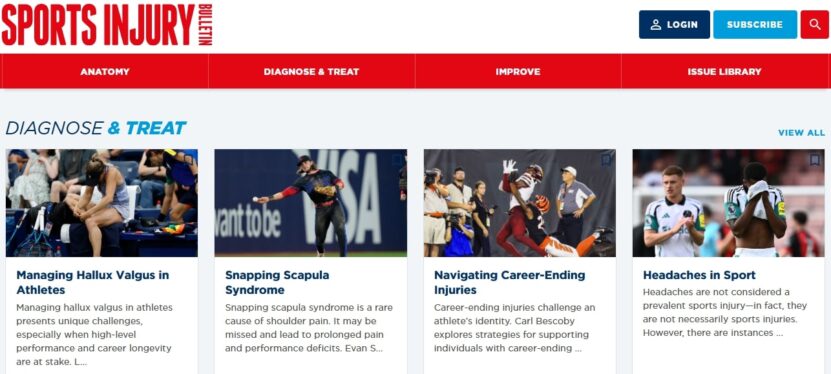
Sports Injury Bulletin compiles expertise from physiotherapists, doctors, researchers, and sports scientists worldwide. Material on the website avoids dense scientific jargon, enabling a broad audience to access practical guidance.
Readers will find tips on training, recovery, and mental strategies that complement physical rehabilitation. The global panel of contributors covers a wide spectrum of topics, from basic first-aid approaches to advanced neuromuscular re-education.
Evidence-based content encourages safe exercise routines tailored to specific athlete needs.
Nutrition pointers also feature prominently, recognizing that a balanced diet promotes better healing. Overall, Sports Injury Bulletin focuses on efficient recovery aligned with each individual’s goals and timelines.
Key Features
- Panel of experts with diverse backgrounds
- Plain-language articles on training and recovery
- Emphasis on mental strategies alongside physical rehab
- Evidence-based nutrition advice
5. Healthline
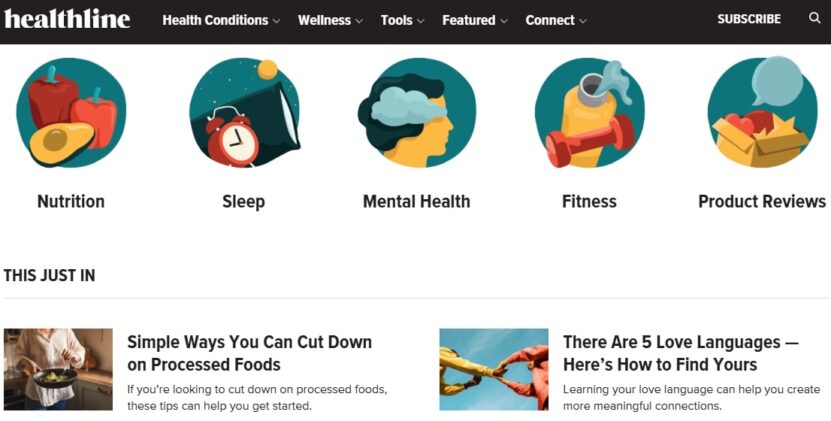
Healthline has long been a trusted name for general medical information, and its sports injury coverage is no exception. Articles usually pass medical review by qualified professionals, adding a layer of reliability.
Pages offer straightforward breakdowns of various injuries, along with symptom checklists and step-by-step treatment outlines. Athletes searching for prevention advice will find sections devoted to exercise modifications, protective gear recommendations, and warm-up routines.
One of the best prevention methods is using quality and appropriate gear, such as choosing the right footwear for yoga, as we’ve mentioned before
Rehabilitation suggestions are grounded in commonly accepted best practices, making it simpler to avoid re-injury or prolonged pain. Healthline also hosts articles on mental well-being, recognizing how psychological health intersects with physical recovery and overall performance.
Key Features
- Medically reviewed articles
- Straightforward breakdowns of injuries
- Prevention tips for gear and warm-ups
- Sections on mental well-being in sports
6. Physiopedia
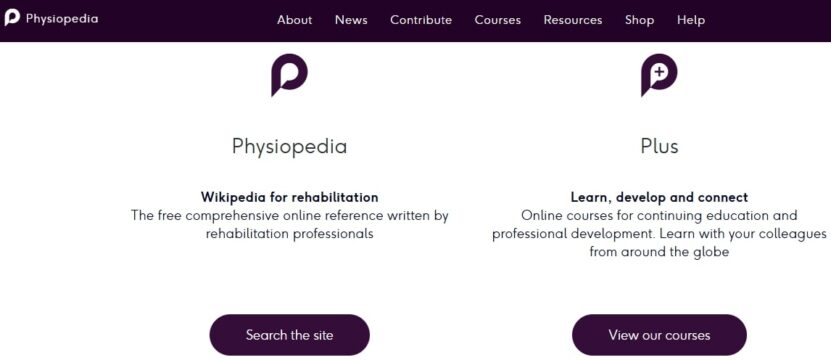
Physiopedia provides expansive coverage on a wide range of sports injuries, offering a clear classification of the most common orthopedic issues.
Practitioners and students often rely on the platform’s articles, which are regularly updated to include new data from research studies. Topics address the mechanism of injury, pathology, and stepwise rehabilitation approaches that align with current evidence.
Beyond text-based content, diagrams and videos serve as visual aids, enhancing practical application.
The site fosters a worldwide network of professionals who share knowledge through collaborative projects, strengthening the foundation of physiotherapy education. That spirit of open collaboration stands out as a defining characteristic.
Key Features
- In-depth classification of common orthopedic injuries
- Regularly updated with new research
- Visual aids like diagrams and videos
- Global community collaboration
7. The American Journal of Sports Medicine (AJSM)
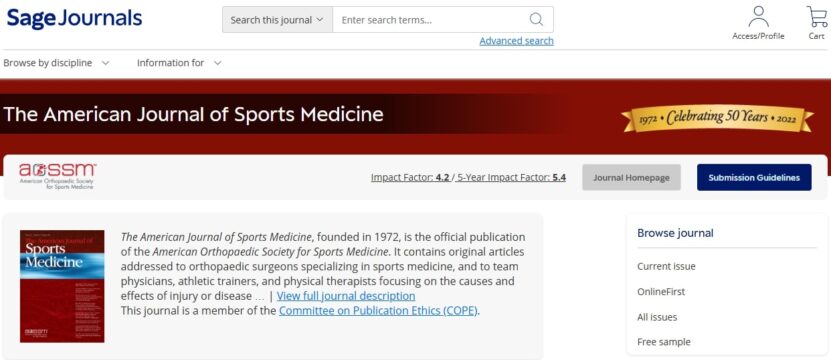
AJSM is a flagship publication in orthopedic sports medicine, carrying studies from renowned researchers and clinicians.
Topics include surgical interventions, rehabilitation protocols, and broad-based reviews of prevalent injuries across numerous sports. Healthcare providers rely on AJSM for timely data on surgical methods that shorten recovery timelines or reduce post-operative complications.
The journal maintains high editorial standards, ensuring articles meet rigorous quality benchmarks. Clinicians can glean insights from objective analyses that compare different treatment approaches, ranging from conservative care to state-of-the-art procedures.
AJSM is also a valuable source for those seeking to improve diagnostic accuracy and refine long-term injury management plans.
Key Features
- Rigorous, peer-reviewed research
- Focus on advanced surgical and rehabilitation methods
- Wide coverage of sports disciplines
- Emphasis on evidence-based practice
8. National Center for Sports Safety (NCSS)
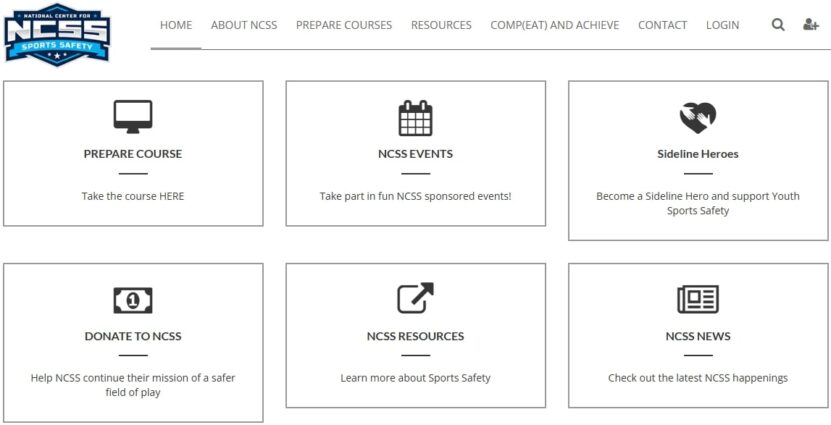
NCSS operates with a mission to lessen harm in youth sports, an area that demands extra vigilance. Founded in 2001, the group invests in public awareness campaigns and educational programs that benefit coaches, parents, and athletes.
Workshops and online courses address crucial topics, including heat-related illnesses, concussion protocols, and safe training volumes. NCSS also collects and analyzes injury data from various sports communities, shaping future prevention initiatives.
By emphasizing practical steps, it encourages early recognition of health risks. Communities that adopt NCSS guidelines often witness fewer hospital visits, improved coaching techniques, and a broader cultural shift toward safer sports practices.
Key Features
- Emphasis on youth sports injury prevention
- Data-driven educational programs
- Practical guidelines for coaches and parents
- Collection of injury data for future research
9. Orchard Sports Injury and Illness Classification System (OSIICS)
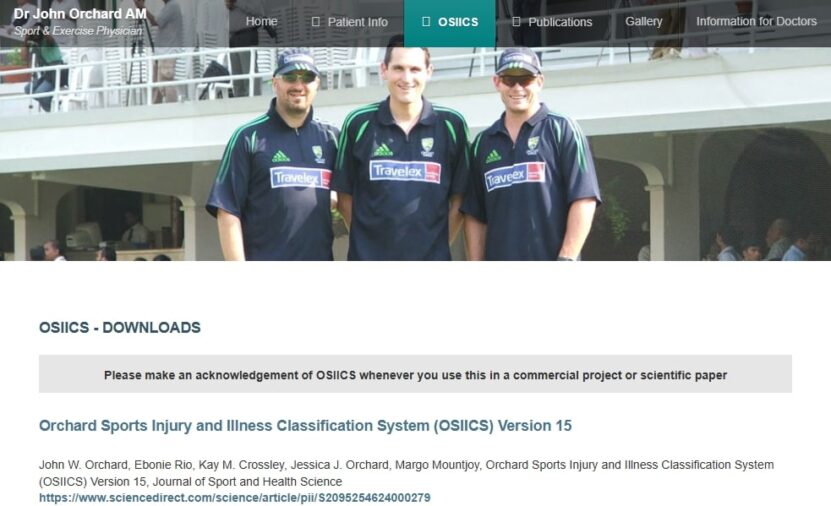
OSIICS stands out as a specialized framework for categorizing sports-related injuries and illnesses. Major organizations, including the International Olympic Committee, lean on the system when recording and analyzing athletes’ health data.
Standardized classification paves the way for consistent reporting, which is essential for detecting trends and crafting targeted interventions. Researchers appreciate OSIICS for its detailed coding that accommodates various injury types, body regions, and severity levels.
Professionals can use the data sets to fine-tune training programs, aiming for fewer injuries and better performance outcomes. OSIICS remains an integral tool in advanced sports medicine research, fueling more effective prevention strategies.
Key Features
- Universal framework for injury classification
- Endorsed by major sports organizations
- Facilitates consistent reporting and data analysis
- Supports targeted interventions and research
10. UPMC Center for Sports Medicine
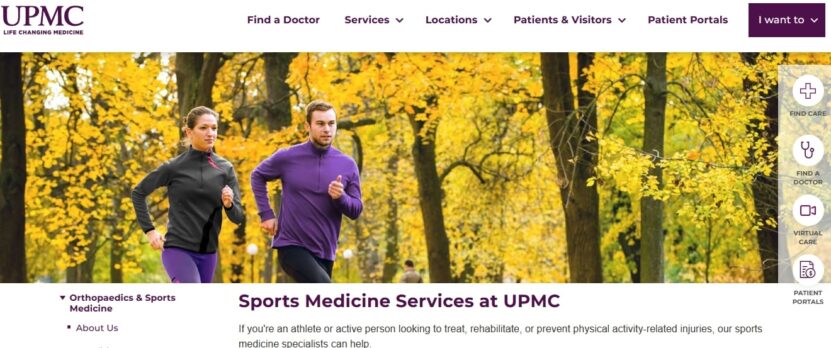
UPMC Center for Sports Medicine has gained recognition as a leader in injury care for athletes at all levels. Specialized experts work collaboratively, delivering comprehensive services that extend from prevention to rehabilitation.
Facilities are equipped with state-of-the-art technology, and staff members often contribute to pioneering studies. Many professional teams and collegiate athletes opt for UPMC due to its track record in cutting-edge treatments.
By blending clinical expertise with innovative research, the center provides a holistic approach that addresses biomechanics, nutrition, and mental wellness.
A dedicated approach to patient education empowers individuals to make informed decisions about training and recovery strategies.
Key Features
- Advanced facilities with state-of-the-art technology
- Collaborative approach among specialized experts
- Holistic focus on biomechanics, nutrition, and mental wellness
- Emphasis on informed decision-making for athletes
Summary
There’s no shortage of sports injury information online, but not all of it meets the gold standard for accuracy. When health and performance are at stake, consulting reputable sources becomes an absolute priority.
Each reference highlighted here offers a specific perspective or unique benefit, ensuring a well-rounded view of injury prevention and rehabilitation.
By focusing on evidence-based data and expert guidance, athletes and practitioners can reduce risks, promote safer training, and aim for optimal long-term outcomes.
